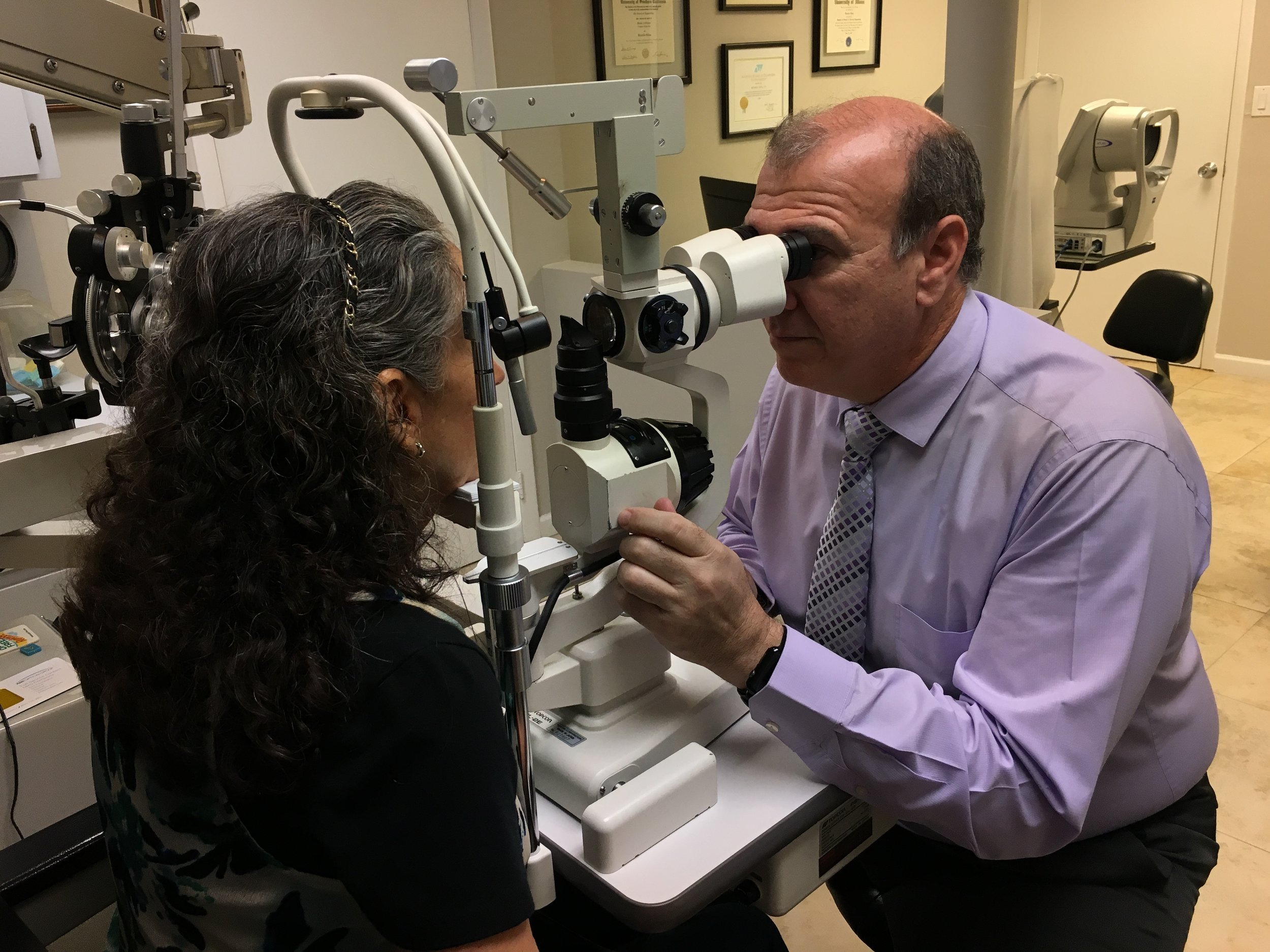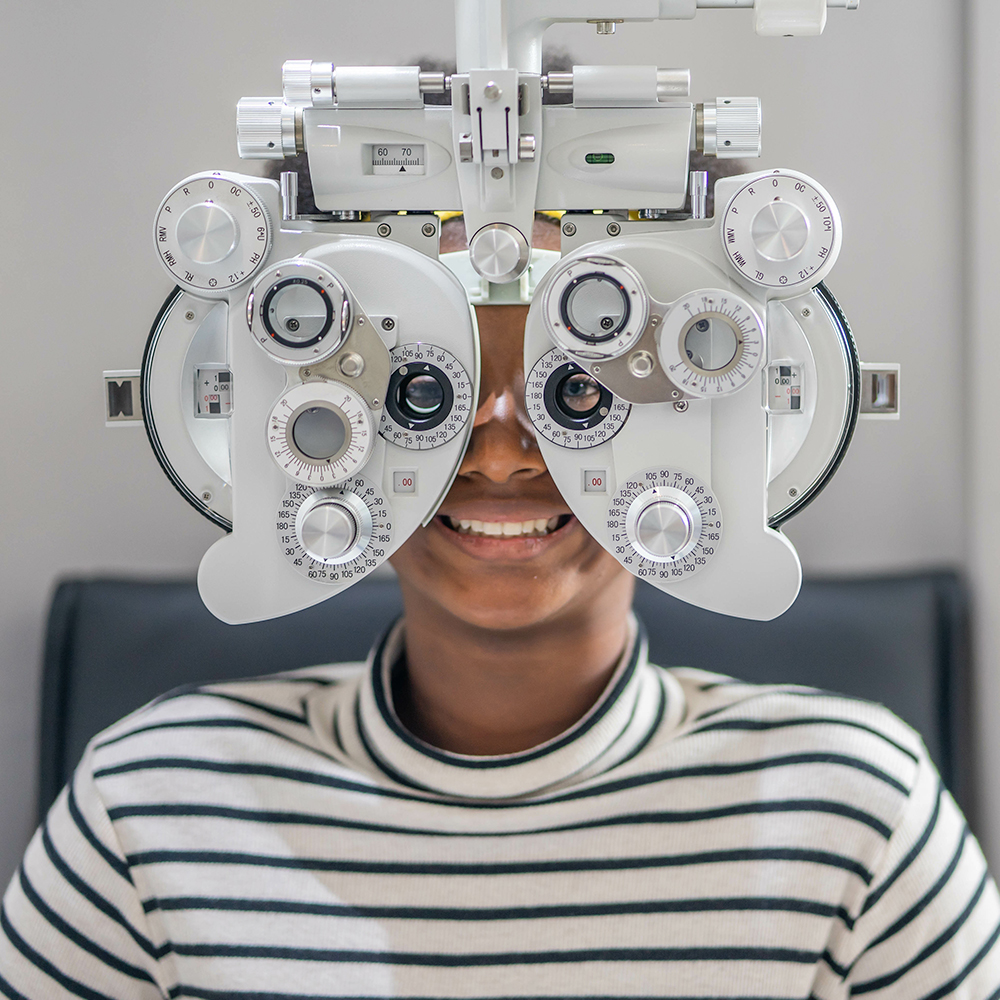Top Factors to Go To an Optometrist Chino for Your Eye Health
Top Factors to Go To an Optometrist Chino for Your Eye Health
Blog Article
Discovering the current Technical Advancements in Optometry and What They Mean for Eye Doctors
In the ever-evolving field of optometry, recent technical improvements are reshaping just how specialists approach eye treatment. From the precision of Optical Comprehensibility Tomography to the nuanced understandings used by AI-driven diagnostic devices, these advancements are setting brand-new criteria in individual evaluation and therapy. Teleoptometry is positioned to redefine access, making sure that expertise goes beyond geographical constraints. As these improvements penetrate the method, eye doctors are confronted with the difficulty of welcoming these tools to improve patient end results. The inquiry continues to be: how will these technological changes redefine the roles and obligations within the career?
Developments in Diagnostic Equipment
Advancing the field of optometry, innovations in analysis tools have actually revolutionized the method eye treatment specialists analyze and identify eye conditions and aesthetic impairments. The previous years has actually witnessed significant technological innovations, enabling more precise and thorough examinations. Optical Coherence Tomography (OCT), for instance, supplies high-resolution cross-sectional pictures of the retina, permitting for the very early discovery of illness such as glaucoma and age-related macular degeneration. This non-invasive imaging technique has become essential in contemporary optometric technique.
Another secret innovation is the introduction of advanced corneal topography systems, which map the surface curvature of the cornea with accuracy. These devices are especially advantageous for suitable contact lenses and identifying corneal disorders. Electronic retinal imaging has actually transformed conventional ophthalmoscopy, using comprehensive, breathtaking sights of the retina that facilitate extensive aesthetic examinations.
The development of wavefront aberrometry has actually likewise been critical, enabling the analysis of refractive errors with unparalleled accuracy (Eye Doctor). This technology aids in personalizing corrective lenses and enhancing medical outcomes for refractive surgical treatments. Collectively, these diagnostic innovations equip optometrists to deliver remarkable person care, making certain very early treatment and tailored treatment strategies, inevitably boosting visual wellness results
AI in Patient Administration
Building on the structure of cutting-edge analysis tools, the consolidation of man-made intelligence (AI) in person management stands for a transformative jump for optometry. AI systems are progressively used to enhance performance, accuracy, and personalization in client treatment. By analyzing huge quantities of data, AI can recognize patterns and predict potential eye problems, making it possible for eye doctors to tailor treatments better. This capacity is critical in taking care of persistent eye illness such as glaucoma and diabetic person retinopathy, where very early discovery and constant monitoring are crucial.
Additionally, AI-driven platforms help with structured client interactions and management procedures. Automated organizing, virtual examinations, and customized follow-up strategies not just improve individual fulfillment however also optimize time management for specialists. These systems can triage people based on the seriousness of their conditions, making sure that those in crucial requirement obtain prompt interest.
Additionally, AI boosts decision-making by supplying eye doctors with evidence-based suggestions and treatment pathways. By integrating information from digital health and wellness records, AI tools provide understandings that notify clinical choices, minimizing the threat of errors and boosting person results. As AI continues to advance, its function in patient management will likely increase, reshaping the landscape of optometric treatment.
Advances in Retinal Imaging
In the world of optometry, retinal imaging has experienced amazing technological developments that are boosting diagnostic capabilities and individual treatment. Developments such as Optical Comprehensibility Tomography (OCT) and fundus digital photography have actually revolutionized how optometrists evaluate the retina and picture.
Boosted imaging techniques like OCT angiography are more refining analysis precision. This non-invasive strategy maps blood circulation in the retina, using critical understandings right into vascular health and wellness without the requirement for dye shots. In addition, adaptive optics modern technology is being integrated right more into retinal imaging systems to fix eye aberrations, delivering unprecedented photo clearness. Such developments facilitate the recognition of minute retinal adjustments that could symbolize condition development.
Moreover, advancements in expert system are boosting retinal imaging by enabling automatic evaluation of big datasets. These systems aid optometrists in recognizing patterns indicative of pathology, thus boosting diagnostic accuracy and performance. Collectively, these advancements are changing retinal imaging into a keystone of contemporary eye care, enhancing outcomes and expanding restorative possibilities.
Teleoptometry's Expanding Duty
Teleoptometry is progressively coming to be an important part of eye treatment, driven by innovations in electronic communication and diagnostic tools. As optometry embraces digital change, teleoptometry promotes remote consultations, allowing optometrists to extend their services beyond traditional boundaries. This is particularly beneficial in rural and underserved areas where accessibility to specialized eye care is commonly restricted. By leveraging high-resolution video clip conferencing and advanced retinal imaging, eye doctors can perform detailed eye examinations from afar, making sure prompt medical diagnosis and therapy.
The integration of expert system (AI) more enhances teleoptometry, enabling the evaluation of visual information and aiding in the discovery of eye conditions such as glaucoma and diabetic person retinopathy. AI-powered formulas can swiftly interpret intricate imaging data, supplying optometrists with beneficial insights that strengthen medical decision-making.
Furthermore, teleoptometry supports connection of treatment through seamless combination with electronic wellness records (EHRs), allowing eye doctors to maintain thorough individual histories. When consulting with different professionals., this ensures that individuals receive regular and personalized care even.
Regardless of these benefits, difficulties continue to be, including making sure information safety and security and managing individual assumptions. Teleoptometry represents a considerable stride in the direction of even more available, effective, and patient-centered eye treatment. As modern technology develops, its function is positioned to increase further.
Future Patterns in Eye Treatment
A myriad of cutting-edge fads is established to improve the future of eye care, driven by technical developments and the evolving requirements of individuals. One considerable trend is the integration of expert system (AI) in diagnostics, which promises to improve the precision and efficiency of eye assessments. AI formulas can analyze large amounts of data from retinal images, possibly discovering problems like diabetic retinopathy and glaucoma earlier than typical techniques.
In addition, tailored medication is acquiring grip in optometry, with hereditary screening notifying tailored treatment plans. This technique aims to optimize patient outcomes by customizing interventions to private hereditary accounts. Wearable innovation, such as wise get in touch with lenses, is additionally on the horizon, supplying real-time web tracking of intraocular pressure or sugar levels, hence providing continuous understandings into systemic and eye health.
The fostering of augmented fact (AR) and virtual fact (VR) in training and client education is one more emerging pattern. These innovations offer immersive experiences that can improve understanding and abilities both for individuals and eye doctors. As these trends advance, eye doctors need to remain abreast of technological innovations visite site to give cutting-edge care, guaranteeing better client end results and satisfaction in the vibrant landscape of eye care.
Conclusion

Jointly, these analysis improvements equip eye doctors to supply premium person care, guaranteeing early treatment and customized treatment strategies, eventually enhancing aesthetic wellness outcomes.

As these technologies continue to progress, eye doctors should adjust and incorporate them into method, eventually maximizing workflow effectiveness and boosting the standard of eye treatment supplied to patients.
Report this page